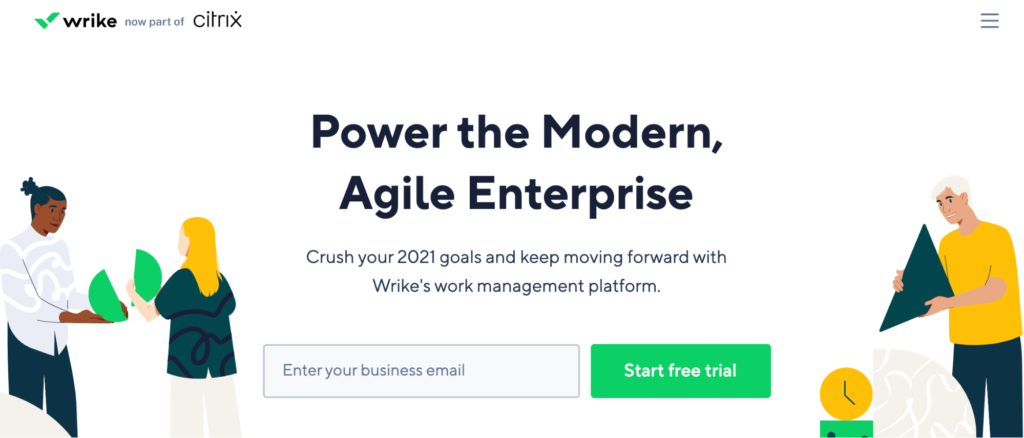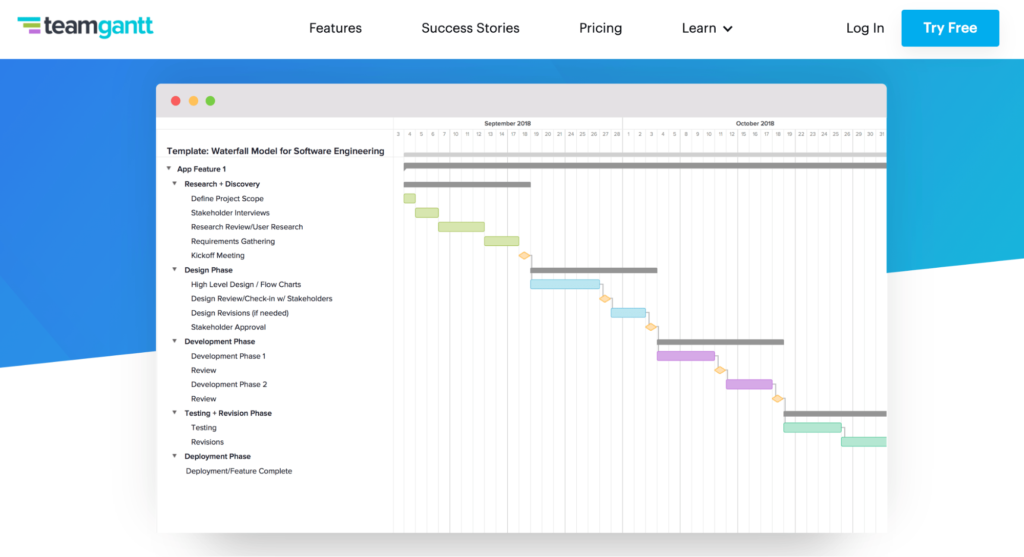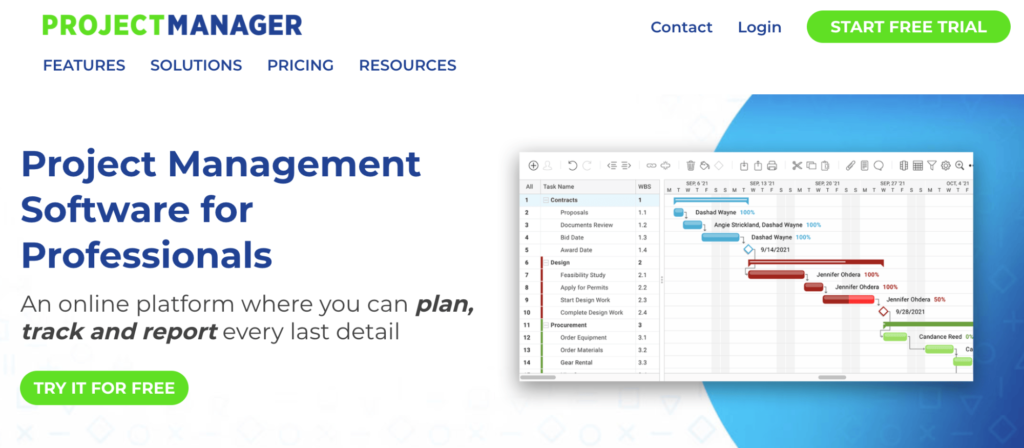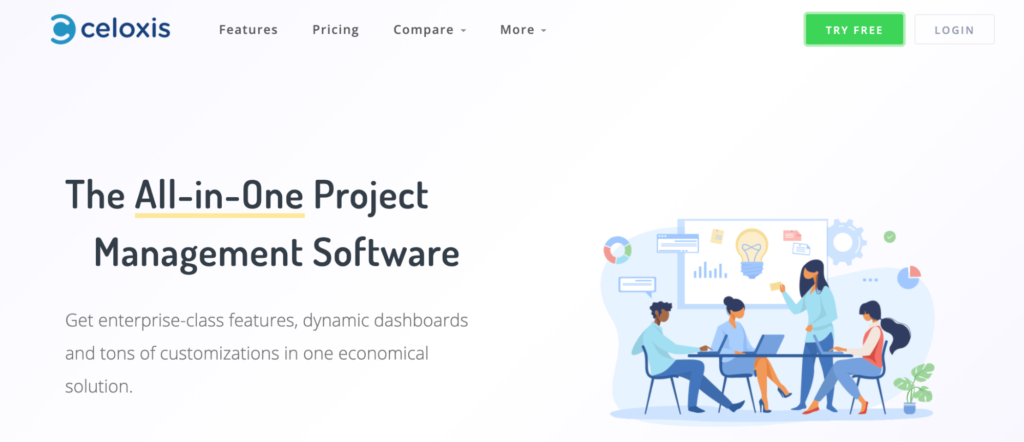There are several unique approaches to project management. Among these options is the waterfall methodology.
Compared to some of the other project management styles out there, the waterfall method has been around for a while. And there are still plenty of applicable use cases for it today. If you’re looking for a simple way to manage projects, the waterfall methodology might just be the best option for you and your team.
Whether you just need a quick refresher or you’re a complete beginner, this guide will tell you everything you need to know about implementing waterfall project management.
What is Waterfall Project Management?
The waterfall methodology follows a linear path. Each step must be taken in sequential order, and a new phase cannot begin until the prior one is complete.
Waterfall project management started in non-software industries like construction and manufacturing. In these types of fields, sequential steps are required (it’s impossible to put up drywall before a house has been framed).
There are five different phases in the waterfall methodology—planning, designing, implementation, testing, and maintenance. There is no returning to the previous phase once you’ve moved on; the only option is starting over from the beginning.
Waterfall project management is designed for long projects that follow a singular timeline. Changes to the plan are typically discouraged and often expensive.
4 Tools to Improve Waterfall Project Management
Implementing the waterfall methodology is futile without the right tools. The following resources will help ensure your entire team has success managing your projects.
#1 — Wrike

Trusted by over 20,000 organizations across a wide range of industries, Wrike is one of the most popular project management tools on the market. It’s easy to deploy and use, and it can accommodate several different project management methodologies—including waterfall. That’s why it’s trusted by well-known brands like Google, Dell, Airbnb, and Siemens. As a project manager, it’s easy to implement the waterfall management style on Wrike using Gantt charts. This timeline view will show your tasks organized by a horizontal calendar. You can even establish dependencies between two tasks or link one task to a milestone. It’s very easy to set up your waterfall with a dependency that one task cannot start until another is complete.
Another cool feature about using Wrike for project management is that your team will get notified when it’s time for a particular task to start. So if one person or a department is waiting on Task A to get done before they start Task B, they’ll be notified ASAP instead of constantly having to check in with whoever is working on the former. There’s a free version of Wrike that can accommodate up to five users. However, this plan does not include a Gantt chart. So you can’t use it to deploy your waterfall methodology. Gantt charts are available on all Wrike paid plans, which start at $9.80 per user per month. Try it free for 14 days.
#2 — TeamGantt

TeamGantt is another powerful and reputable online project planning tool. Anyone can use this software to start planning a project in a matter of minutes, regardless of their experience level. But don’t let TeamGantt’s simplicity fool you. The software is used by industry leaders like Nike, Disney, Netflix, Amazon, and Intuit. As the name implies, TeamGantt specializes in using Gantt charts—a crucial tool for managing a project using the waterfall methodology. One of my favorite parts of TeamGantt is that it comes with pre-built project management templates. So you don’t have to build out your waterfall from scratch. Customizing the templates is easy, and changes can be made by leveraging TeamGantt’s drag-and-drop functionality.
Getting started is simple. You can create your first project with up to three users 100% free when you sign up. Premium plans start at $24.95 per month and support an unlimited number of projects. In addition to the Gantt charts and waterfall benefits, you’ll also love top features like workload forecasting, project history, daily reminders, task lists, team conversations, file attachments, a project discussion board, and more. These plans even support unlimited guest users. Try a premium TeamGantt plan for free with a 30-day trial.
#3 — ProjectManager.com

More than 375,000 project managers across the globe rely on ProjectManager.com. The tool is used by NASA, Ralph Lauren, the United States Postal Service, AVIS, and more. It’s an excellent option for anyone seeking an online resource to manage, track, and report projects using the waterfall methodology. With Gantt charts from ProjectManager, your entire team will have the ability to schedule, plan, and update projects in real-time. It’s really easy to adjust start dates and end dates using the draggable interface on ProjectManager. Colors and columns are fully customizable.
I like ProjectManager because it also has built-in team collaboration tools. You can use it to add comments, share files, update the status of a task, and more. You’ll be notified immediately when tasks have been completed so the next phase can begin. The tool is trusted by construction teams, manufacturing teams, IT and development teams, professional services organizations, engineering teams, product teams, and more. ProjectManager.com integrates with 1,000+ third-party apps like Salesforce, Dropbox, Slack, Microsoft Office, and other business tools that you’re using daily. Plans start at just $15 per user per month. Give it a try for 30 days by signing up for a free trial.
#4 — Celoxis

Celoxis is a bit more advanced compared to some of the other waterfall project management tools on the market today. While it’s definitely a viable option for managing linear projects, it comes with enterprise-grade features commonly needed by larger organizations. That’s why the tool is trusted by brands like Tesla, LG, Lufthansa, HBO, Adobe, Whirlpool, Rolex, and more. As an all-in-one tool, it comes with solutions for project planning, project accounting, team and client collaboration, resource management, project portfolio management, and other advanced features that go above and beyond waterfalls and Gantt charts.
Another standout of Celoxis is its advanced reporting and shareable dashboards. This gives project managers unique insights into the progress of a project and allows them to share necessary information with clients, stakeholders, and executives. You can even automate this process and set it up, so reports are automatically emailed directly to your company’s CEO. Celoxis integrates with 400+ business apps like Slack, Salesforce, Zendesk, QuickBooks, Zapier, Google Drive, Jira, and more. The cloud package starts at $22.50 per user per month with an annual contract. There’s an on-premise version of Celoxis starting at $450 per user that’s offered as a single purchase with no recurring fees. Try Celoxis for free with a 30-day trial.
The Basics of Waterfall Project Management
As previously mentioned, there are five core components to the waterfall methodology. This section will break down each phase into greater detail, so you have a complete understanding of how to implement this methodology with your team.
Planning
The first phase of the waterfall methodology is planning. Since the phases must be followed in a strict linear order, this is arguably the most important part of the process.
Essentially, you’ll use this step to plan for all subsequent steps. This is also known as the “requirements” stage, as you’ll prepare and gather as much information as possible about the project and what needs to be accomplished. It’s common for project managers to obtain information via questionnaires and interviews to get started, whether from clients, stakeholders, or internally. Assigning roles to your team will also be established in the planning phase.
Make sure you put as much thought and time as possible here, and don’t take any shortcuts. Otherwise, you might be forced to start back from the beginning if things go wrong down the road.
Designing
The design phase takes the planning one step further. This is where you’ll establish the specifics of the project.
Actions, budgets, timelines, scope, and everything else will be outlined here. For the waterfall methodology, this should be very specific and not account for a ton of change along the way. Budgets and timelines are super strict and not up for much flexibility.
The designing process can best be described as how you’ll get everything in the planning phase accomplished.
Implementation
Now it’s time to execute your plan. The majority of a project will be spent in the implementation stage.
For example, let’s say you’re working on a software development project. All of the coding and product development will happen here. For a construction project, the actual building process takes place during the implementation phase. This part of the project will typically last for several months and sometimes over a year, depending on the scope.
It’s critical that all tasks and activities are documented during this step. Sometimes clients will want to see evidence of specific tasks, and you may even need to keep track of time or resources for billing purposes.
Testing
Once the implementation phase is complete, it’s time to test everything. This step is pretty self-explanatory, though it varies by industry and project type.
For software, this is when QA takes place, and real people actually test the product. You’ll look for bugs and ensure that the software functions as it was designed to.
After the testing is done, you’ll deliver or deploy what you’ve been working on.
Maintenance
The final step of waterfall project management is maintenance. Most products, whether in software, construction, or another field, aren’t perfect upon delivery.
It’s common for issues to arise down the road. Depending on your contract agreements with the clients or stakeholders, your team should be prepared to assist with ongoing maintenance in the future. This could include software updates, patches, or minor adjustments to improve the overall performance.
You and your team should also take the time to look back and review the project. Figure out what went well and where you can improve. This will make it easier for everyone to do better when it’s time to start the next project.
4 Tricks For Waterfall Project Management
As a waterfall project manager, there are a few quick hacks and best practices you should keep in mind. Here’s what you need to know to ensure your project runs as smooth as possible:
Trick #1: Leverage Project Management Software
The software you use can ultimately make or break the success of your project. This is especially true in the modern workforce, where your team is likely dispersed or remote. You may not have access to everyone in the same room for 40 hours a week.
Your team might even be working in different time zones or completing tasks at other times of the day. The only way to keep everyone on the same page is with software as your single source of truth.
In addition to the tools mentioned earlier in this guide, check our list of the best project management software on the market today. The article even describes our methodology for choosing the right tool for your unique situation.
Trick #2: Be Sure the Project is Suitable For the Waterfall Methodology
The last thing you want to do is try and force this methodology on a project that it won’t work for. This will cause you and your team many problems down the road and will likely be an expensive issue to fix.
With the waterfall methodology, there is always a clearly defined end goal. Your client or any stakeholders know exactly what they want. Anyone joining the project should clearly understand the end goal and see how you’re going to get there.
If the project scope has some uncertainty and required flexibility and changes along the way, then the waterfall methodology won’t work.
So if your client isn’t providing well-defined requirements or they expect to add changes while the project is in process, you cannot use this methodology. You’d be better off using an agile methodology in this scenario.
Trick #3: Clearly Articulate Project Expectations With Stakeholders
This piggybacks off the last point. It’s one thing to understand how the waterfall methodology works in-house, but it’s another aspect altogether to explain this to your clients.
Stakeholders need to know from the beginning that the original scope and requirements of the project can’t be changed along the way, and this isn’t an adaptable or flexible method. They won’t know this unless you tell them.
While you don’t need to bore them with the specifics of how the project will be managed, you do need to make it clear that whatever was agreed upon at the beginning will be the final result. They can’t change their mind and add a feature or remove something in three months.
Trick #4: Leave Plenty of Time For Testing
Due to the rigid nature of these projects, it’s common for project teams to feel rushed as deadlines approach.
Don’t assume that things will go smoothly in the testing phase. If enough issues are found, a lot more work might be required to fix them. Too many project managers underestimate the testing timeline, causing them to miss deadlines and go over budget.
It’s better to plan for the worst and leave yourself some extra time here. If the testing goes well, nobody will be upset if the project is delivered early. But most people won’t be happy if things are delivered late, especially if it costs more money.

